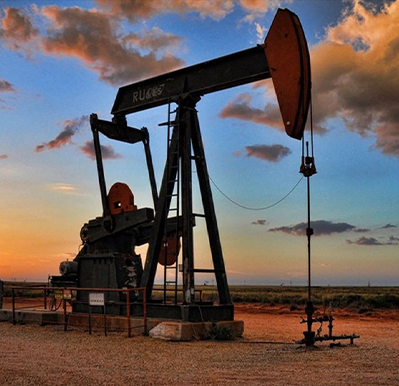- Afrikaans
- Albanian
- Amharic
- Arabic
- Armenian
- Azerbaijani
- Basque
- Belarusian
- Bengali
- Bosnian
- Bulgarian
- Catalan
- Cebuano
- Corsican
- Croatian
- Czech
- Danish
- Dutch
- English
- Esperanto
- Estonian
- Finnish
- French
- Frisian
- Galician
- Georgian
- German
- Greek
- Gujarati
- Haitian Creole
- hausa
- hawaiian
- Hebrew
- Hindi
- Miao
- Hungarian
- Icelandic
- igbo
- Indonesian
- irish
- Italian
- Japanese
- Javanese
- Kannada
- kazakh
- Khmer
- Rwandese
- Korean
- Kurdish
- Kyrgyz
- Lao
- Latin
- Latvian
- Lithuanian
- Luxembourgish
- Macedonian
- Malgashi
- Malay
- Malayalam
- Maltese
- Maori
- Marathi
- Mongolian
- Myanmar
- Nepali
- Norwegian
- Norwegian
- Occitan
- Pashto
- Persian
- Polish
- Portuguese
- Punjabi
- Romanian
- Russian
- Samoan
- Scottish Gaelic
- Serbian
- Sesotho
- Shona
- Sindhi
- Sinhala
- Slovak
- Slovenian
- Somali
- Spanish
- Sundanese
- Swahili
- Swedish
- Tagalog
- Tajik
- Tamil
- Tatar
- Telugu
- Thai
- Turkish
- Turkmen
- Ukrainian
- Urdu
- Uighur
- Uzbek
- Vietnamese
- Welsh
- Bantu
- Yiddish
- Yoruba
- Zulu
Optimal Techniques for Installing and Maintaining Seating Nipple Tubing Systems in Oilfields
Understanding Seating, Nipple, and Tubing Essential Components in Oil and Gas Production
In the oil and gas industry, the efficient transfer of fluids from underground reservoirs to the surface is paramount. Central to this process are several critical components, one of which is the seating, nipple, and tubing system. Each element plays a vital role in ensuring the smooth and safe operation of extraction processes.
Understanding Seating, Nipple, and Tubing Essential Components in Oil and Gas Production
Nipple is a term that describes a short length of pipe with a specific dimension that connects other pieces of piping or tubing. In the context of oil and gas production, nipples are often used to connect various sections of tubing, casing, or valves. There are different types of nipples, such as pup nipples, which are used to add length to a piping string, and threaded nipples, which allow for a tighter fit between connections. The use of nipples in tubing systems is essential not only for connectivity but also for pressure distribution throughout the system. Ensuring that nipples are securely attached and free from defects is critical for maintaining the integrity of the project.
seating nipple tubing

Tubing, specifically, refers to the pipes that transport oil or gas from the wellbore to the surface or between different sections of the production assembly. Tubing is designed to withstand high pressure and corrosion from the fluids being transported. Different grades and types of tubing exist, tailored to specific conditions such as temperature, pressure, and the chemical nature of the fluids involved. The choice of tubing material is an important consideration, as it impacts the longevity and efficiency of the production process. Common materials include carbon steel and various grades of stainless steel, often coated or lined to prevent corrosion.
When combined, the seating, nipples, and tubing form a comprehensive system that ensures the effective transfer of resources while maintaining safety standards. The functionality of this assembly is crucial for a successful drilling operation; any failure in these components can lead to costly downtime or environmental risks.
Regular maintenance and inspection of these components are essential practices in the oil and gas industry. Operators invest in advanced monitoring technologies to detect early signs of wear and tear, ensuring that any issues can be addressed before they escalate. This proactive approach not only extends the life of the components but also enhances overall operational efficiency.
In conclusion, seating, nipple, and tubing systems form the backbone of fluid transport in oil and gas drilling operations. Understanding their roles is essential for maintaining safe, efficient, and environmentally responsible extraction processes. As technology advances, the industry continues to explore innovative materials and techniques to improve these critical components, ensuring the sustainable development of oil and gas resources. By investing in the quality and integrity of seating, nipples, and tubing, operators can significantly enhance their operational performance and reduce the risks associated with oil and gas extraction.
-
Well Casing Extension Couplings – Applications and InstallationNewsJun.06,2025
-
Types of Crossover Subs in Drilling & CompletionNewsJun.06,2025
-
Key Features of High-Quality Tubing Pup JointsNewsJun.06,2025
-
Installation and Maintenance Tips for Steel Couplings for PipeNewsJun.06,2025
-
How to Select the Right Pup Joint for Oil & Gas OperationsNewsJun.06,2025
-
Applications of Stainless Steel Pipe CouplingsNewsJun.06,2025







